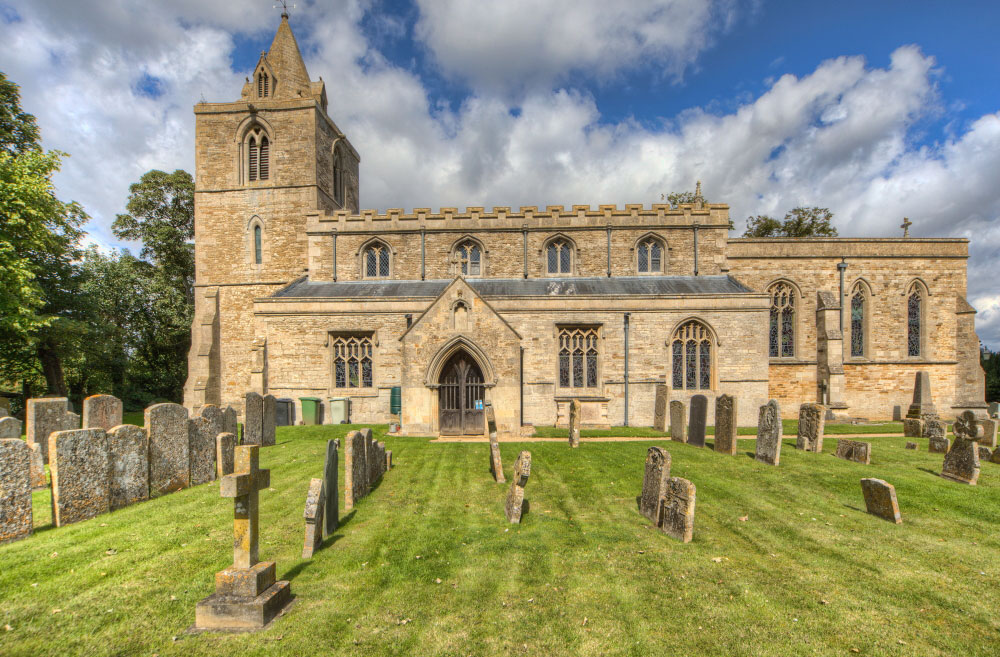
South view of the church which has great views over Rutland Water
Three miles south-west of Oakham is the small village of Brooke which is at the head of the River Gwash. In 2001 the population was recorded as 211. Half a mile north of the village was the priory of St Mary of Brooke which was founded during the reign of King Stephen before 1153. By the 16th century it was mostly ruinous. Today there are some remains of the priory built into a later structure and I hope to add this as a separate entry in the future.
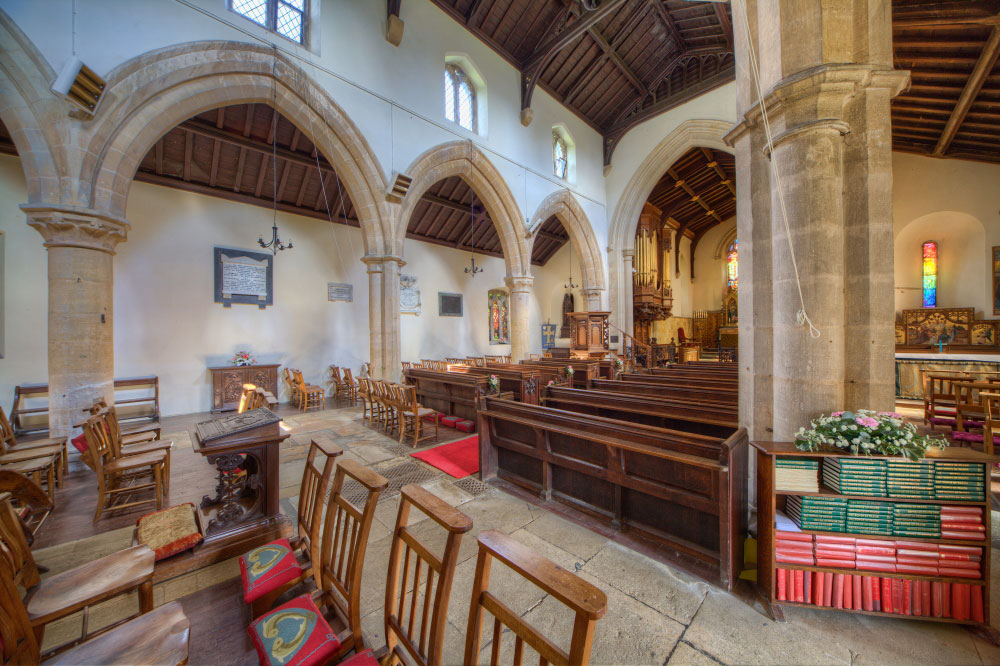
North arcade and nave area
Hambleton is a popular choice for people visiting Rutland Water as the village is perched on high ground and surrounded on three side by the waters of the reservoir. The village is two miles east of Oakham and has a population of around 140. It is a pretty little village with a busy pub and Hambleton Hall neaby which is sited now on the edge of the lake.
The parish originally included the settlements of Upper Hambleton and Nether Hambleton but these were submerged in the 1970’s when the reservoir was formed from the River Gwash. At the time of the Norman Conquest the manor belonged to Queen Edith and included the seven berewicks of the village. On her death in 1075 the manor passed to King William I and in 1086 it was recorded the manor had three priests and three chapels. The seven ‘berewicks’ (outlying settlements) of Hambleton may have been Braunston, Normanton, Lyndon, Martinsthorpe, Edith Weston, Manton and Market Overton.
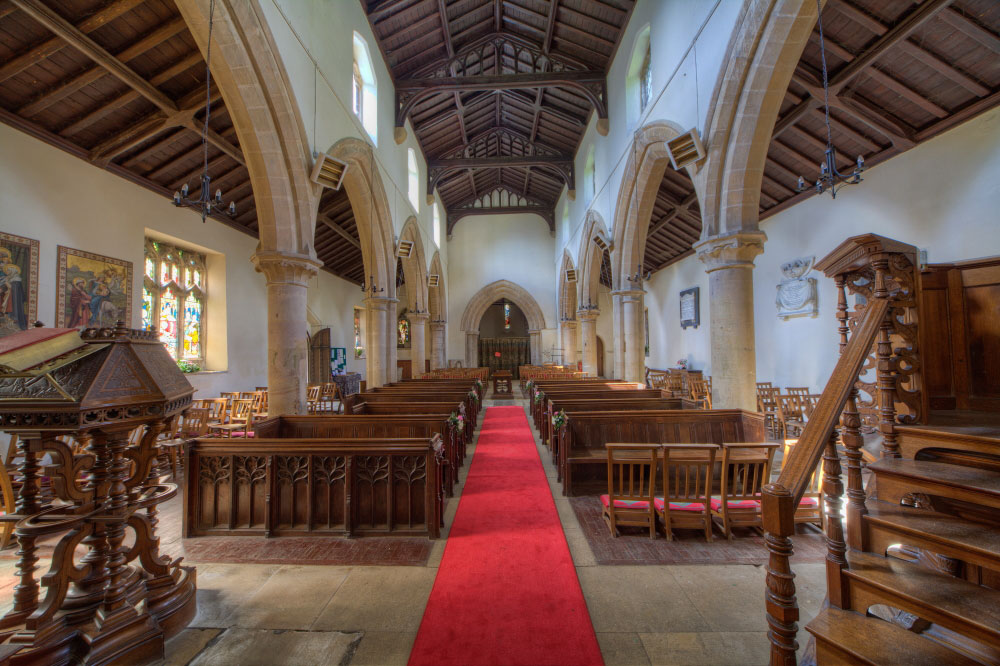
View towards west tower, the lecturn is very unusual
The King soon passed the manor to a Robert Umfravilles who came over during the Conquest with William the Conqueror. It passed through many hands and you can read more about the history of the manor above by following the link in the panel. When a Ralph Basset of Drayton came into the manor he was not popular and twice in 1326 and 1334 his lands were entered, his servants assaulted, and his horses, oxen and sheep driven away. Thankfully today the village is quieter, although on the day we arrived the place was extremely busy with walkers and cyclists and the pub car park across from the church was full. So be warned it can be busy here but do not let that put you off it is still a great place to visit and walk around.
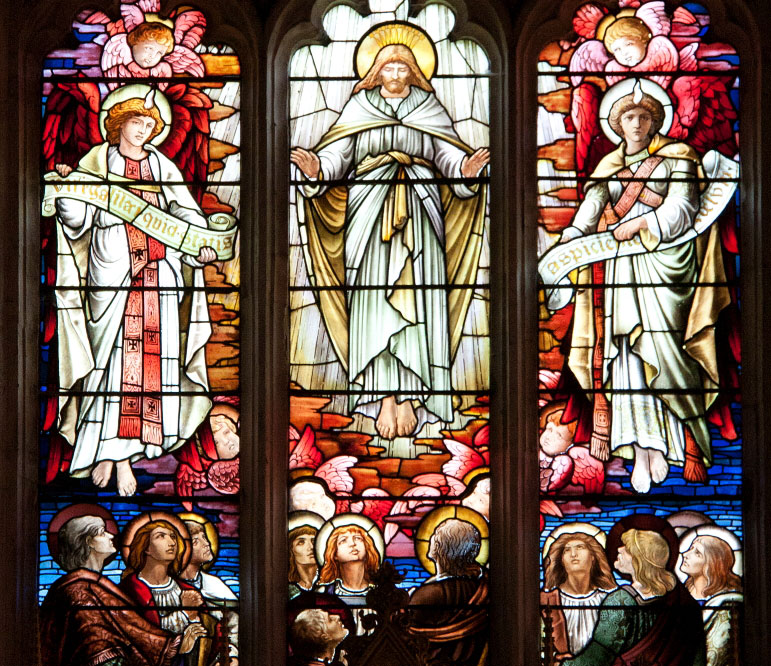
East window detail
The church of St Andrew is sited on the highest point of the promontory which Hambleton now resides on and it is quite a large church. The south doorway has some Norman features and most of the church was built during the late 12th century. The arcades date from the 13th century and consist of four bays, whilst the clerestory dates to the 15th century being Perp. The chancel is totally Victorian as they pulled down the original one in 1892 and they have included modern sedilia, and piscina. The work was undertaken by J. T. Lee and he reused the east window, Pevsner states the chancel is ‘a splendid remodelling’ and I have to agree.
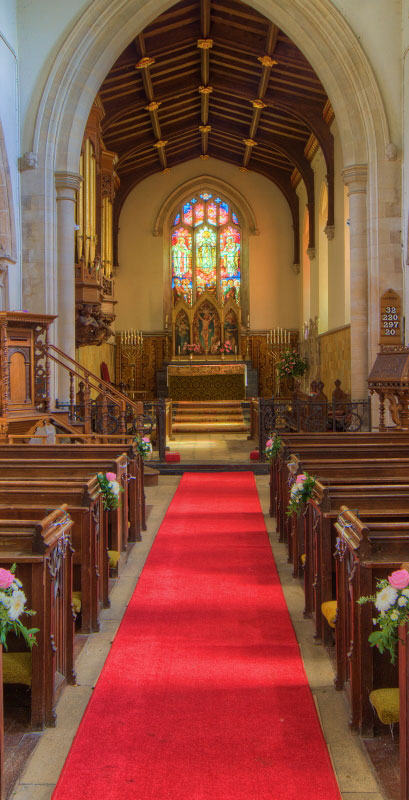
Chancel
The church layout is a west tower with small broached spire, vestry on north side of tower, south porch, south and north aisles, nave, chancel and organ chamber.
There is one monument, a coped coffin lid probably removed from the churchyard. On it a sunken pointed-trefoiled recess the head and praying hands of the deceased . The feet stick out, as if the coped surface were a large shield, it dates to the 14th century. There are no other monuments but the font is probably 12th century with a square bowl on a short stem.

14th century carving, probably originally in churchyard
Interestingly it is recorded that in 1242 at Little Hambleton ‘John Talbot was permitted a licence for a private chapel in his manor-house, without font or bell, to be served by his own chaplain at his own expense; but he, his wife, and their heirs were to attend the church at Great Hambleton on Sundays and similar feast days, unless prevented by sickness, and no Sacrament was to be administered without special licence. Further, John Talbot and his wife agreed to give the church of St Andrew, Great Hambleton, on St Andrew’s day. 1/2 stone of wax (just over 3 kgs) or 2s yearly.’
There is parking near the church, a pub across the road and plenty of good walks along the lakeside, one for a nice spring or summers day. The church is always open and is worth a visit and there is plenty more to see and do around the area.



Latest Comments